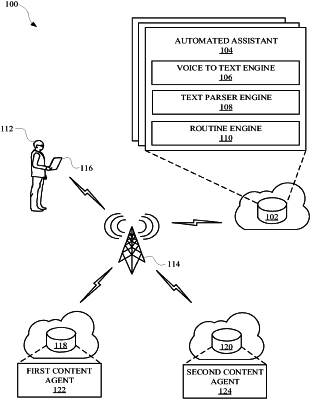| CPC G10L 15/22 (2013.01) [G06F 3/165 (2013.01); G10L 13/00 (2013.01); G10L 15/26 (2013.01); G10L 15/30 (2013.01); G10L 2015/223 (2013.01)] | 16 Claims |

|
1. A method implemented by one or more processors, the method comprising:
receiving, at a client device, a request for an automated assistant to perform a routine that includes multiple different actions, wherein the multiple different actions include an action that the automated assistant is configured to perform in response to receiving an input at an automated assistant interface of the client device;
causing a first action and a second action of the multiple different actions to be initialized, wherein initializing the first action and the second action includes requesting first content and second content to be received, by the client device, via a content stream from one or more server devices;
receiving a portion of the first content via the content stream;
providing the portion of the first content to a user via the client device;
when the first content is being provided to the user and the second content becomes available to the automated assistant:
identifying data of the first content to fragment prior to the client device completely provisioning the first content; and
causing the second content to be output between provisioning different fragmented portions of the first content.
|